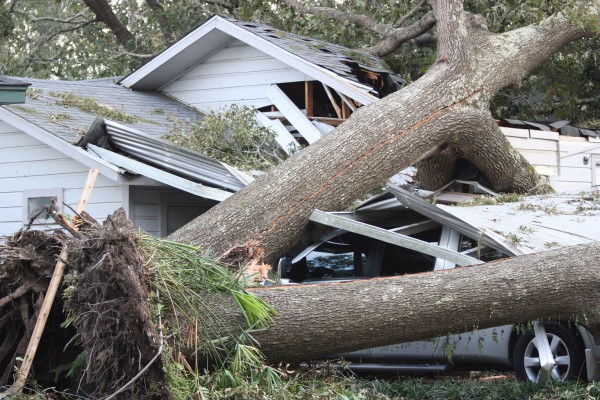- October 26, 2016
- Posted by: Liam Dai
- Category: Uncategorized

Tree Claims: What to do when your neighbor’s tree falls on your house
Any homeowner will tell you the benefits of their trees: cooling shade, tasty fruit, chirping birds, and cleaner air. But what happens when trees attack!? All kidding aside, having a tree fall can be a bit of a hassle, especially when it comes to your homeowners insurance policy and how you’ll claim—especially if it was a neighbor’s tree. Let’s take a look at a few scenarios, observing how insurance companies and responsible policy holders can act.
#1 – A tree falls on your car…
Generally speaking, if a tree falls on a car, the comprehensive coverage of the car owner’s auto insurance policy will apply. If your neighbor’s tree falls on your car, your comprehensive coverage still applies, not theirs. Conversely, if one of the trees on your property falls on your neighbor’s vehicle, their comprehensive coverage would apply.
Because of how seldom trees fall on vehicles compared to other automotive calamities, many drivers just insure for liability (usually the state minimum) and cross their fingers, hoping for the best. If a tree falls on someone’s underinsured vehicle, what happens? The damage is NOT covered and presumably those trips to the mailbox will be a bit more tense than usual…
#2 – Your tree falls on your home…
If a tree on your property falls on your house or the additional structures, like a garage or gazebo, your homeowners insurance policy will cover the damages after you pay the deductible. This also includes any debris removal according to the limits of your policy’s pre-defined limits.
You may be wondering if a tree falling by itself and landing on your property would be subject to removal by your insurer. The answer is usually no, even if it causes a significant obstruction to your home.
#3 – Your tree falls on your neighbor’s home…
While it may not exactly cause the greatest of neighborly relations, if your tree falls on your neighbor’s house and/or structures, the most basic rule is that your neighbor’s homeowner’s insurance policy will cover damages to their house.
However, as we’ll see below in example #5, this becomes subject to a different scenario if the tree was considered a risk…
#4 – Your neighbor’s tree falls on your house…
Don’t think for a second you’ll receive any preferential treatment—just as your tree falling on their house and structures is covered by their insurance, their tree falling in your yard is covered by your insurance.
#5 – A tree falls that could’ve been avoided…
As we mentioned in #3, there are exceptions to who is liable to pay for damages, especially as premiums tend to increase the more times you file claims. If your neighbor has a tree that is showing signs of age, wear, and the possibility of it falling is likely, it is up to you to
- a) inform your neighbor of the situation,
- b) have the tree evaluated by a professional, and
- c) send documentation of the evaluation to your neighbor and insurer from the professional stating their findings.
This will give you a better legal footing should the tree fall and cause damages/injuries.
* * *
Homeowners insurance is often a complicated matter that isn’t always apparent to the DIY’er. Talk to the insurance advisors at RiskBlock today to make sure you’re covered for trees—yours and your neighbors!
